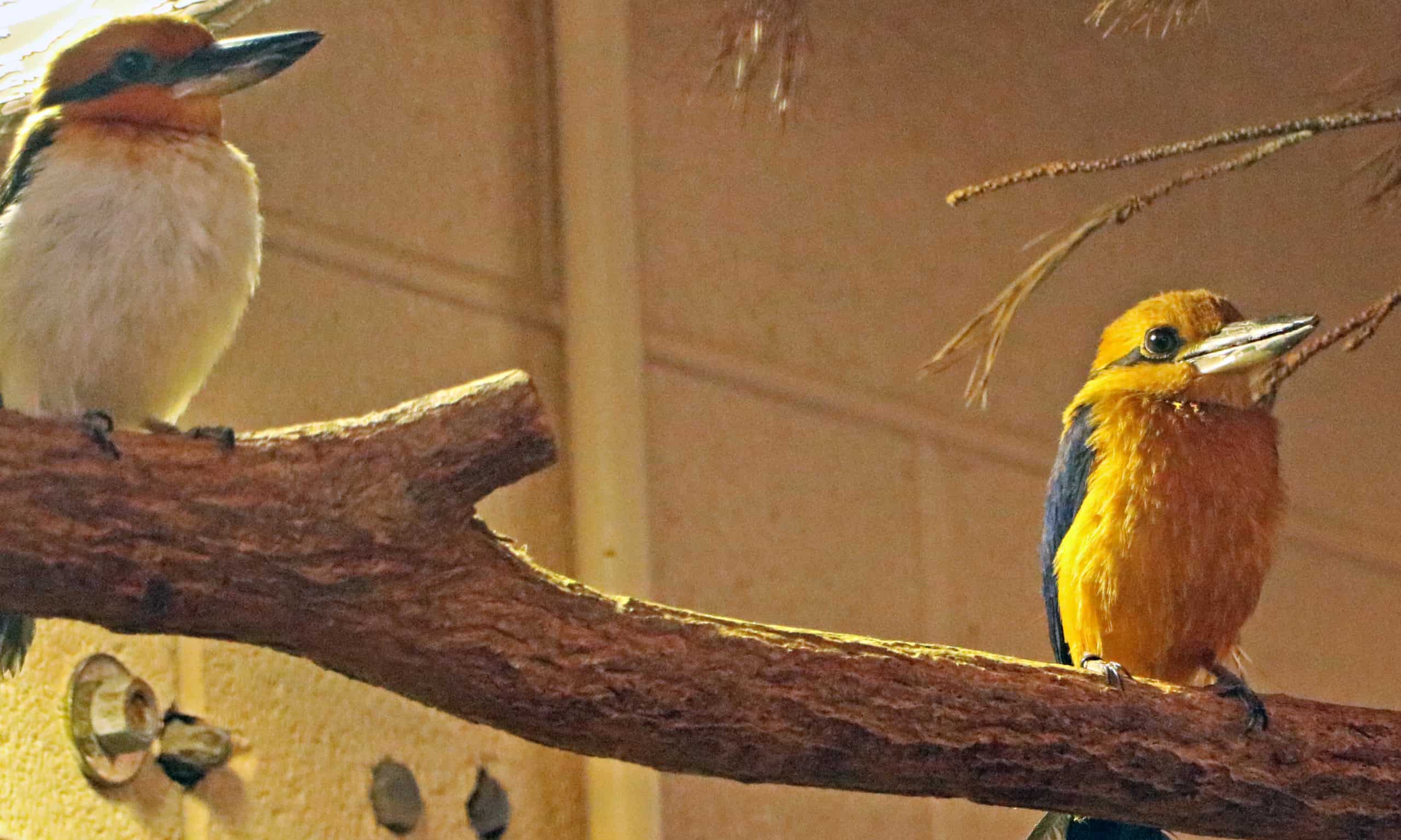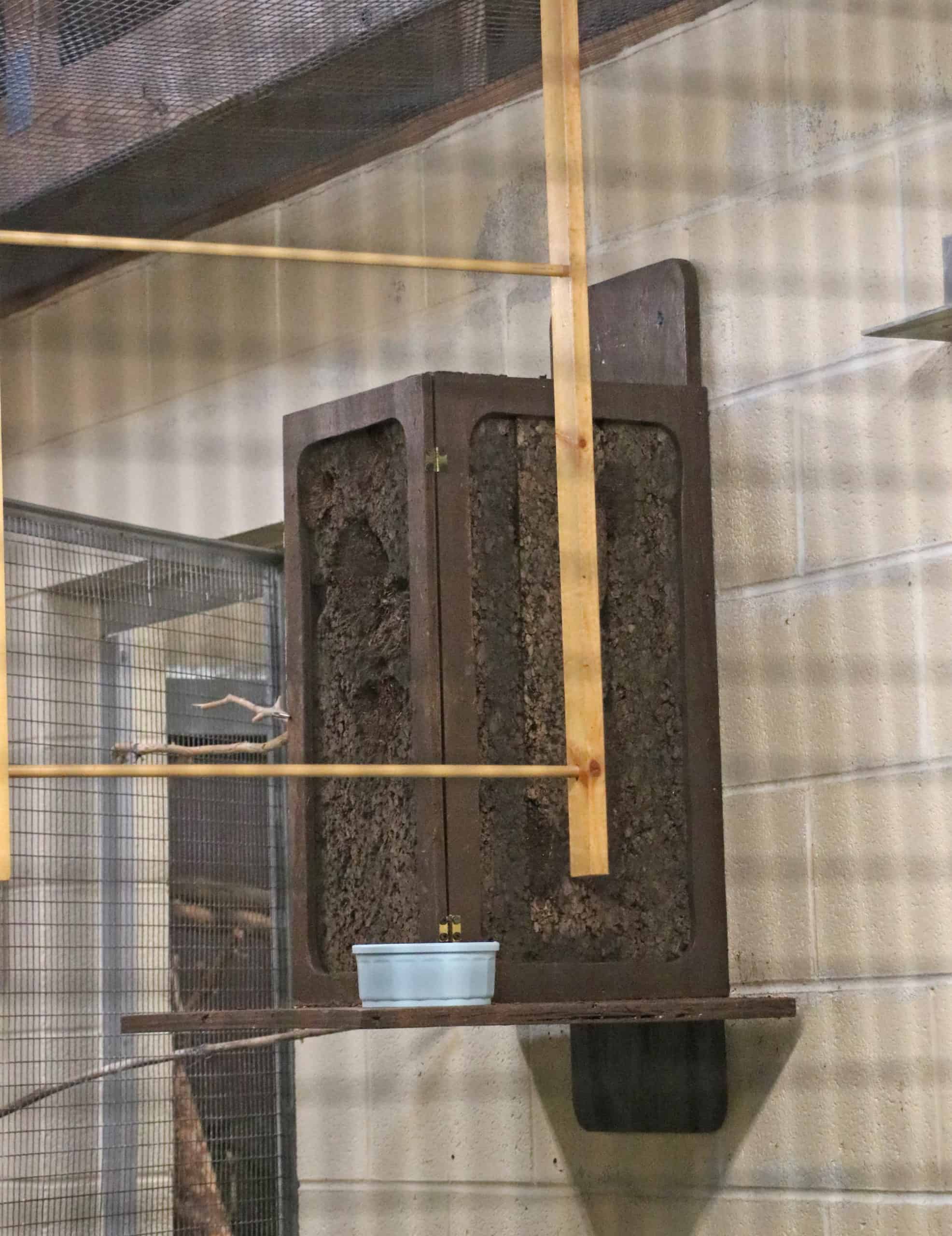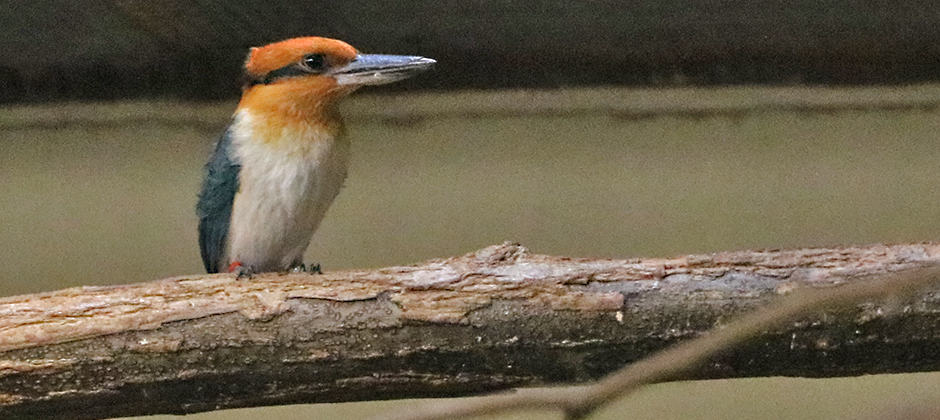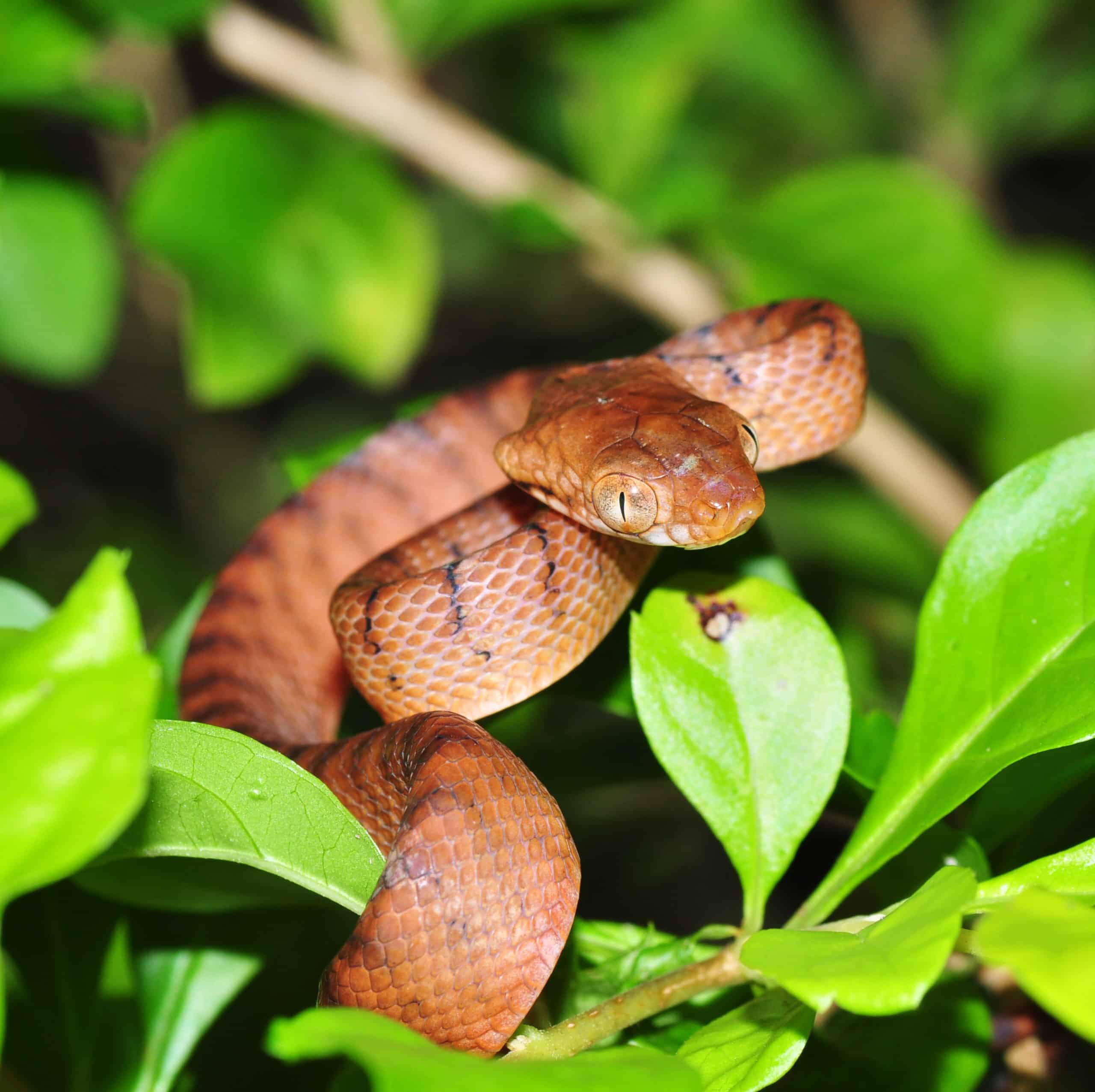Share this article
Reviving once extirpated Guam birds
Colored in drab brown with zebra-like stripes across its breast and standing about a foot tall, the Guam rail that zookeepers call Tasi isn’t much to look at in first glance. But shortly after it’s released from its cage at the Smithsonian Conservation Biology Institute in Front Royal, Virginia, the flightless bird putters around the feet of a group of reporters on the concrete floor, pecking at shoelaces and dipping its beak inside shoes to investigate.
Eventually, Warren Lynch, the bird unit manager at the institute, regains the reporters’ attention by scooping up the energetic rail and placing it on his shoulder as he discusses the conservation issues in Guam that invasive species pose to birds like this one.
Guam rails (Hypotaenidia owstoni) were considered extirpated from Guam in the late 1980s after invasive species like cats (Felis catus), rats (Rattus norvegicus) and brown treesnakes (Boiga irregularis) decimated their numbers on the island. A few enclosures down, Lynch points out a breeding pair of Guam kingfishers (Todiramphus cinnamominus), a species declared extinct in the wild in 1986, due also in large part to invasive species.
Brown treesnakes are perhaps the most notorious for invading the island. The reptiles arrived in Guam sometime around World War II as shipboard stowaways. Lacking natural predators on the island, treesnakes exploded in numbers at the expense of the rails, kingfishers and other native species. The reptiles became so numerous, they even caused problems for infrastructure on the island by slithering into electrical boxes and onto power lines.
The USDA Animal and Plant Health Inspection Service (APHIS) is currently working on plans to reduce treesnake numbers on Guam by firing toxic bait cartridges out of helicopters. Meanwhile, the Smithsonian facility is one of a handful around the United States breeding these two bird species in captivity for reintroduction.
“The end goal is to get them back to Guam,” says Erica Royer, an animal keeper at the Smithsonian location in Front Royal who works with these birds.
Enlarge

©Joshua Rapp Learn
Breeding the rail-way
The bird nicknamed Tasi was hand-reared at the facility as an education ambassador to bring more attention to the small brown birds that spend much of their time in the wild trying not to be seen. Even the adjacent enclosures, which also hold Guam rails, show little sign of their occupants amidst the tropical plants.
“It’s hard to inspire people about a little brown bird you can’t see,” Royer says.
But as an education ambassador, Tasi helps connect people to the plight of these birds, which is why the animal keepers have named him. It’s not hard to see why when the staff kicks him a small ball used as enrichment device. The bird puffs up and pecks at it like it’s an intruder, sending it rolling off.
“I think it’s more enrichment for people than it is for him,” Lynch jokes.
Because Tasi was raised with close interaction with people, the rail will never be reintroduced to Guam. But chicks hatched at the facility are being banded and sent to Rota and Cocos, two smaller islets near the main island that are treesnake-free and where people take some measures to control or eradicate feral cats and rats.
The release on these islands is still experimental as researchers try to learn more about the best way to reintroduce captive bred birds into the wild. Royer said the rails are being released in batches of about 50 on these small islands since they found this large-scale release to have a better impact on survival than small group releases.
The knowledge they gain from these releases will help with eventual reintroduction on Guam, though Royer said the number of brown treesnakes remaining on the island means wildlife managers are still a way off from reintroduction.
A place fit for a king
In a sense, the rail’s inability to fly has actually worked well for its reintroduction, because managers can be confident the birds will stay put. The Guam kingfisher’s ability to fly presents wildlife managers with a challenge. Researchers can’t just introduce them to neighboring Cocos, free from treesnakes, and expect them to stay in that sanctuary.
While Rota is a little farther away, that island never had Guam kingfishers, and a larger native kingfisher species that occupies the is islet already fits that ecological niche.
Since captive breeding of the kingfisher had never been done before, researchers basically had to start from scratch.
Enlarge

©Joshua Rapp Learn
“They have been a lot more difficult to breed,” Royer said. Researchers at the Smithsonian have tried to pair birds using genetics, but they’ve found that individuals aren’t always compatible.
“We’ve had to learn a lot about the species we have in human care,” Royer said.
Even when they found compatible pairs, like the ones in this photo (the female is the white-breasted one on the left), they had a problem with disappearing chicks, perhaps due to cannibalism. They realized that baby birds looked a lot like the baby rodents they were feeding to the adults. A change in diet helped reduce this problem.
Enlarge

©Joshua Rapp Learn
Another early problem occurred when the captive birds didn’t respond well to ready-made nests. They knew Guam kingfishers laid their eggs in dead trees, but it took some trial and error to realize that nest excavation actually represented an important part of the courtship process, Royer said.
“The females wouldn’t lay eggs in the nest. She’d just be sitting on a perch, drop an egg, and it smashes on the floor,” Lynch said. “This just illustrates the problem of having an animal that you know nothing about — there’s only 20 of them left in the world — and you’re trying to keep them from going extinct.”
Once they began putting boxes made of layers of cork that the birds could excavate, like the one pictured above, they had more success. Plus, the boxes are easy to replace by adding new layers of cork for the birds to excavate in subsequent breeding periods.
“The end goal is to get them back to Guam.”
These changes have led to large improvements in kingfisher husbandry. The Smithsonian and other facilities have gone from having 29 birds in captivity in the entire world to 139 as of the beginning of March.
These higher numbers mean researchers may eventually reintroduce some kingfishers, as they don’t have anywhere else in captivity to keep them.
“The goal is 2021, but we’ll see what happens,” Royer said.
The rail effort on Rota and smaller Cocos has already seen some success, though. Royer said that wildlife managers there have seen chicks and adults without bands, meaning the reintroduced rails have successfully raised new generations of wild individuals.
Header Image: A Guam kingfisher pair at the Smithsonian Conservation Biology Institute in Front Royal, Virginia. The female has a white breast while the male, partially out of view, has a more solid orange color. ©Joshua Rapp Learn









